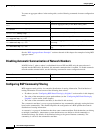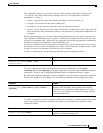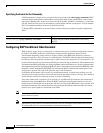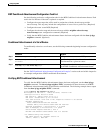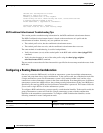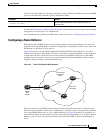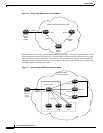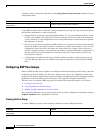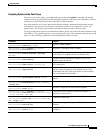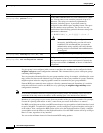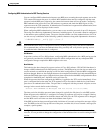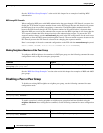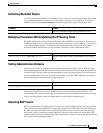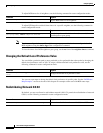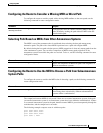
Configuring BGP
Configuring Advanced BGP Features
IPC-320
Cisco IOS IP Configuration Guide
To disable client-to-client route reflection, use the no bgp client-to-client reflection command in router
configuration mode:
As the iBGP learned routes are reflected, routing information may loop. The route reflector model has
the following mechanisms to avoid routing loops:
• Originator ID is an optional, nontransitive BGP attribute. It is a 4-byte attributed created by a route
reflector. The attribute carries the router ID of the originator of the route in the local autonomous
system. Therefore, if a misconfiguration causes routing information to come back to the originator,
the information is ignored.
• Cluster-list is an optional, nontransitive BGP attribute. It is a sequence of cluster IDs that the route
has passed. When a route reflector reflects a route from its clients to nonclient peers, and vice versa,
it appends the local cluster ID to the cluster-list. If the cluster-list is empty, a new cluster-list is
created. Using this attribute, a route reflector can identify if routing information is looped back to
the same cluster due to misconfiguration. If the local cluster ID is found in the cluster-list, the
advertisement is ignored.
• Use set clauses in outbound route maps to modify attributes, possibly creating routing loops. To
avoid this behavior, set clauses of outbound route maps are ignored for routes reflected to iBGP
peers.
Configuring BGP Peer Groups
Often, in a BGP speaker, many neighbors are configured with the same update policies (that is, the same
outbound route maps, distribute lists, filter lists, update source, and so on). Neighbors with the same
update policies can be grouped into peer groups to simplify configuration and, more importantly, to make
updating more efficient. When you have many peers, this approach is highly recommended.
The three steps to configure a BGP peer group, described in the following sections, are as follows:
1. Creating the Peer Group
2. Assigning Options to the Peer Group
3. Making Neighbors Members of the Peer Group
You can disable a BGP peer or peer group without removing all the configuration information using the
neighbor shutdown router configuration command.
Creating the Peer Group
To create a BGP peer group, use the following command in router configuration mode:
Command Purpose
Router(config-router)# no bgp client-to-client
reflection
Disables client-to-client route reflection.
Command Purpose
Router(config-router)# neighbor peer-group-name
peer-group
Creates a BGP peer group.



